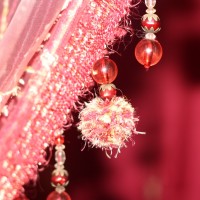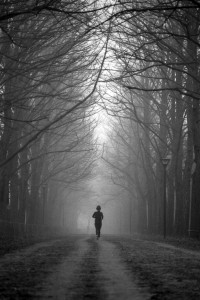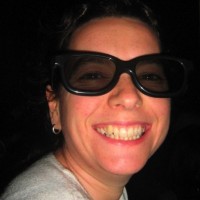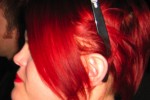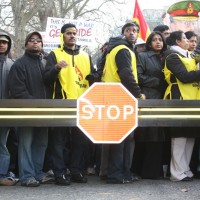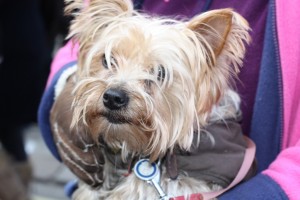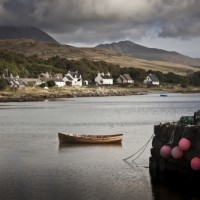
Think quick: when was the last time you found a photographer you got really excited about? For me, it was a couple of weeks ago, when I came across Lauralyn. Armed with a cheap pocket camera, a 10-second timer, and a great deal of patience, she performs an ongoing fictional autobiography, in a series of photos that ooze raw honesty and sensuality. Obviously, I wanted to find out more - and what's the point in writing for a popular blog if you can't abuse your privileges to get some interviews?
Lauralyn is an unusual photographer in many ways. She doesn't shy away from controversy in her astonishingly, almost voyeuristically frank blog - and her photography is equally honest. As far as vision goes, her conceptual self portraiture would put a great deal of professional photographers to shame, which makes it all the more awesome that she shoots mostly on very simple equipment. "I am on my fifth Sony Cybershot camera", she laughs, "I love 'em, but I do wish Sony would comp me a few - I've got a nasty habit of breaking the suckers".
Of course, with equipment that's cheap enough to nearly be disposable, it enables you to take bigger risks to get the photos you really want. "In lieu of a tripod", Lauralyn explains, "I set my camera in a dish packed with tin foil, and place it on a small table that's lightweight enough to carry from place to place". She might have broken her last camera for a while, though, as she does confess to having taking the plunge on a tasty gorillapod for a recent shoot.
A rebel without a photography course
Lauralyn's interest for art started early on, she recalls. "As a youngster, I was politely asked to leave school mere weeks before completing my 10th grade year. By the time I got kicked out, I was showing up to an average of about 5 classes per week. I chose instead to spend most of my time either in the Art Building drawing and painting, or on the campus of a nearby university - immersing myself in the thriving arts and music scene there."
When she was 18 years old and staying in Paris as a nanny for a while, Lauralyn bought her first camera (a secondhand 35mm Minolta for $135 USD). "I was traveling with a painter who had been accepted into the Cite Internationale des Arts, and she helped me get comfortable with the camera. She persuaded me to use black and white film. There may have been something magical about that camera, or perhaps it was simply the fact that I was capturing images of the most beautiful city I'd ever seen in my life..."
"I have always loved to take "candids" of my friends and my children, but I did nothing artistic with photography from the time I left Paris at age 18 until..." We're getting ahead of ourselves a little bit. Let's rewind a few years...
From Divorcee to Digital Diva in 3 easy steps
"In my early 20's I moved to my mother's birthplace, met the man who would become my husband of 10 years, and the father of my 4 children. We divorced amicably and although I wouldn't say that we're 'friends' exactly, we do manage to be friendly with one another". After her divorce, Lauralyn discovered online dating - with a vengeance. "I became a ravenous online dater", she laughs, and makes a little tiger-growl.

After one too many dating mishaps, a friend encouraged her to start writing about it - and for the next few years, she spilled the beans on-line, "much to the chagrin of those in my community who felt uncomfortable knowing so much about my indiscretions".
"Where is this blog"? I hear you cry, "I, too, want to hear of these wanton indescretions!". Not to worry, point your fine browsing equipment at the Big Ugly Truck (nsfw).
Online dating turned out to be the inspiration for getting into photography again. "I realized after being on the same dating sites for so long, that guys were showing less and less interest in me and my worn-out, old profile", Lauralyn recalls. So, as any girl with a creative streak would do, she reached for her camera and went for it.
"At first I just held the camera out - away from my face, and snapped fairly uninteresting pics", she recalls, but soon decided to make some changes. "I put up a new avi on Twitter (@biguglyblog) of myself in a black bikini, and saw not only a jump in hits to my blog, but a rise in my Twitter followers as well. One new follower suggested I contribute a photo to Twitter's weekly #HNT (half nekkid Thursday) meme".
The birth of a photo blog
Of course, whenever an attractive lady posts half-naked photos of herself on the internet, the response is predictably popular. "In no time at all, I was addicted to my weekly photo shoots", Lauralyn admits. She decided to let her old blog (and dating, for that matter) fall by the wayside - and instead took up self-portraiture as her new chosen form of self expression, on the freshly minted Big Ugly Pix blog.
"Self portraits", you might say. "Isn't that an exercise in navel-gazing?" Well perhaps, but as I always like to say; the only model you consistently have available (and the only one who might ever 100% agree with your vision), is yourself. Lauralyn would agree - "I'll be the first person to admit that I've become rather self-centered in the last few years, but at the risk of (further) painting an unflattering picture of myself as some sort of reprehensible narcissist", she titters, "I have to be honest and say that - I continue to take these pictures because in doing so - I'm exploring a creative outlet that is thrilling and both mentally and physically challenging. I find it terribly rewarding."
As far as addictions go, Photography tends to be significantly more expensive than any sort of drug abuse - but by using relatively cheap Sony cameras, that particular door to bankruptcy has been bolted shut. Instead, our dastardly auto-portraiturista has channeled her addictions differently. "I have become inexorably addicted to each and every facet of this type of self-portraiture: from brainstorming the themes and the costume, to scouting out locations and then going out on the shoots themselves".
You have probably noted from the photos (and That Other blog, if you took the time to have a quick look there) that Lauralyn doesn't shrink away from a challenge - something that's reflected in all aspects of her work. "I relish testing my physical ability and tempting fate by trespassing on private property or photographing myself naked (or partially so) in public places". The addiction metaphor works well also in the rewards column of the equation. "Coming down from the high I get from pulling off a questionable or particularly difficult shoot can take hours. Obviously, that sensation that was magnified the few times I've been detained by the police in the course of my art."
As photographers, you sometimes can't help yourself at the end of a good day's shooting: The excitement of finally seeing your hard work on a big screen in front of you can be thrilling. "Reviewing a shoot's images for the first time is the closest thing to the ecstasy one feels as a child while tearing into presents and digging through stockings to find all sorts of goodies on Christmas morning, as an adult", Lauralyn explains, her eyes on fire with excitement.
Feeding on Feedback
But of course, the feedback loop doesn't stop there. Lauralyn's work is her own creative insight, of course, but she is deeply populist in that she devours her online feedback with great gusto. "I thrive on getting feedback, whether it's positive or negative", she says, "It lets me know that people are reading my blog". Of course, she prefers favourable comments like the rest of us, but Lauralyn seems to have found a healthy way to deal with negative feedback, too. "Even if my commenters don't approve of my unorthodox behavior, or consider me an artist at all, I do appreciate the feedback".
Lauralyn explains how she lives in a relatively small community (both virtually and in real life), and doesn't do anything to hide her blogs from public view. Needless to say, not everybody approves, and she frequently gets negative responses. "When someone responds to my work with impassioned negativity I take that to mean that something about the images impacted the viewer emotionally - hatred is an emotion, after all."
Whilst she isn't currently making any money of her art, I sense that Lauralyn does seem to have an undercurrent of driven ambition about her. "I will never have a typical high wage-earning career", she says, and points out that she never continued school after she dropped out aged 16. She wears impulsivity on her chest like a medal, and thrives with having come to the realisation that that is who she really is. "I am guilty of following artistic whims, just because I want to", she says, "But I believe that the reason I've dug my heels in all these years and refused to hold down a normal job for very long is because for one thing: it makes me feel like a caged animal".
In a way, she has made it further than many of us. "I've got the what-do-I-wanna-be-when-I-grow-up part finally figured out", she smiles, and hints that it took her a while. "Now I just have to figure out how to make it generate some income."
Whilst Lauralyn's model is the same for every shoot, her repertoire is constantly changing and evolving. She's no stranger to nudity in her shots, and the photos are often bold, challenging, and eye-catching. It may seem like a desperate cry for attention, I ventured, but that notion was laughed away. "If you knew me in person, you might hardly recognize from the photos. I dress like a slob, rarely wear make-up, my hair is a mess, and for the most part I am a happy, upbeat person."
Who is this person?
An actor in her own fictional autobiography, she explains how she is frequently startled when she downloads a new batch of photos. "Oh my god, I don't even know who that is", she laughs, and I'm starting to understand where the 'thrill of the chase' is coming from.
"I don't try to deliberately emote anything specific during a shoot. I go in knowing only this: the location, what to wear and a general idea for a theme or some sort of physical stunt. But getting into frame and striking a convincing pose or performing some physically demanding feat in 10 seconds, sometimes hundreds of times in quick succession, is difficult enough without also trying to manifest any particular emotion", Lauralyn says.
She describes a feeling that seems very familiar to me from long days in the darkroom, or in a photo studio, hell-bent to get the light perfect: "I do find though, that after certain shoots, I kind of snap out of an eerie fog, after which it hits me how deeply immersed I was without even knowing it at the time. It's a very peculiar sensation."
Balancing family life
At 42 and as a mother of four kids, aged 8, 11, 12 and 14; does she worry what her kids might think if they found out about her blog? "What do you mean 'found out'", Lauralyn says, genuinely (and rightly) insulted by the insinuation. "They know they know all about it - in fact, I stick to a policy of never posting pictures on my blog that I wouldn't let my children see. In a way, they are my filter, the litmus test I use before I post."
Personally, I think I was scarcely aware of the fact that nudity even existed (or, at least, not that it meant anything) before I hit puberty, but Lauralyn has taken a progressive approach with her kids. "I realise that there is a possibility that they might at some point be ridiculed by their peers for what I do, and I have discussed that their mother is an artist", she smiles proudly, nodding in the direction where her children are. "Every time I hop up on my little soap box to hammer this stuff into their heads, they nonchalantly reiterate, 'No one talks about it mom'".
Of course, all artists have to struggle with the unavoidable truth that as soon as their art becomes well known enough, people will start talking - but there is no shortage of examples of artists who have dealt with that challenge amicably. One of those artists is Lauralyn's fellow Virginian photographer Sally Mann. "I have to say", Lauralyn muses.
"Mann has become something of a role model for me. Not so much because I wish to emulate her style of photography - her work, to me, is inimitable as well as unsurpassable - but more so because she raised her kids to have a very firm grasp on what she was doing as an artist and (more importantly) why. They were properly prepared to deal with potential fallout from the controversy surrounding her work, and in adopting and applying Sally Mann's strategy, I hope that my children will be equally as well-equipped to deal with our own (smaller-scale) brouhaha..."
Ultimately, however, Lauralyn has her course set out: "When people fuss at me for posting naked photographs of myself on the internet, claiming that what I'm doing will hurt my children in the long run - all I can think is that I am doing this for my children. Someday", she says, wagging her slender finger at me in mock admonishment, "it's gonna pay off, just watch!"
I think the thing I admire most about Lauralyn's approach to her work, is that she has a very clear picture (pun not intended, of course), of how she benefits from it - directly and indirectly.
And then, just as she takes the last sip of her coffee and gets up to leave, she succinctly voices the dream of every photographer - perhaps every human being - that ever lived. "I'm clinging to the notion that one day I'll earn a living doing the thing that I love most".
Lauralyn works and lives in Virginia. You can check out her photos on her website or on Flickr, follow her daily twitterings at @biguglyblog. Her defunct-since-july-but-still-enthralling-reading dating-and-life-blog is still up at Big Ugly Truck, as well.
Do you enjoy a smattering of random photography links? Well, squire, I welcome thee to join me on Twitter -
© Kamps Consulting Ltd. This article is licenced for use on Pixiq only. Please do not reproduce wholly or in part without a license. More info.
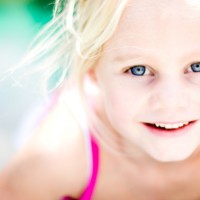







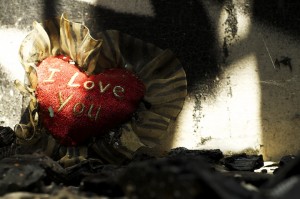
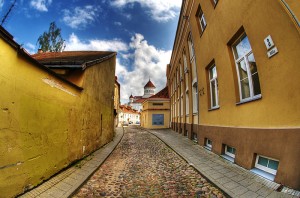



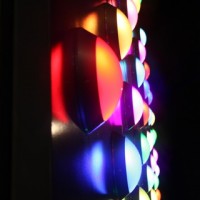
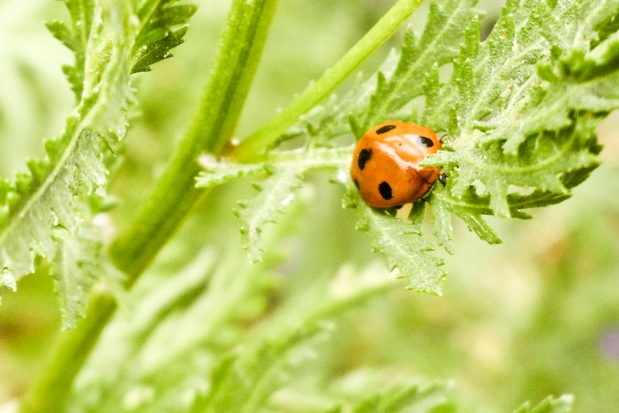
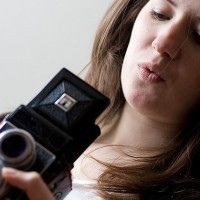

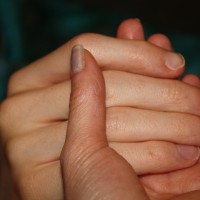






 The notion of emotive nudes itself is something you rarely find: You often get people expressing emotions in photography, and nude photography are a tuppence a dozen all over the internet. The combination is rare, and people who can pull it off well are even further between.
The notion of emotive nudes itself is something you rarely find: You often get people expressing emotions in photography, and nude photography are a tuppence a dozen all over the internet. The combination is rare, and people who can pull it off well are even further between. “I’ve been working with photography professionally since the beginning of 2007″, Pascal says, and explains that financially, it hasn’t been a dance on roses. Photography “is rather complicated, but filled with enthusiasm.”
“I’ve been working with photography professionally since the beginning of 2007″, Pascal says, and explains that financially, it hasn’t been a dance on roses. Photography “is rather complicated, but filled with enthusiasm.” Despite preparation, it is never easy to tell how well you connect with a model. “I don’t know why or how, but there is always some form of bond between the model and myself”, Pascal muses. “After all, there is a complicity between us, and we have a common goal: to make the best photographs possible. To do so, I always seek out a tranquil environment to take photos in, it helps relaxing the model, and creates a friendly atmosphere. Then we take it from there”.
Despite preparation, it is never easy to tell how well you connect with a model. “I don’t know why or how, but there is always some form of bond between the model and myself”, Pascal muses. “After all, there is a complicity between us, and we have a common goal: to make the best photographs possible. To do so, I always seek out a tranquil environment to take photos in, it helps relaxing the model, and creates a friendly atmosphere. Then we take it from there”. “I do use a studio to take my photos”, Pascal says, “but I only use natural light, usually in the morning. I do use reflectors to guide the light where I want it to go, but flashes and artificial lights? None of that”.
“I do use a studio to take my photos”, Pascal says, “but I only use natural light, usually in the morning. I do use reflectors to guide the light where I want it to go, but flashes and artificial lights? None of that”.